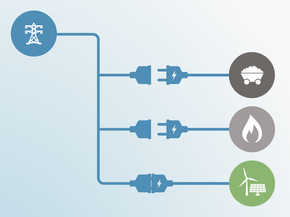Targets
Target Overview
In April 2023, Türkiye submitted the first update of its 2030 NDC target. Türkiye’s previous NDC was its 2015 INDC, which was resubmitted as an NDC in October 2021 when Türkiye finally ratified the Paris Agreement.
The updated NDC has an unconditional target of reducing GHG emissions including LULUCF in 2030 by 41% below a business-as-usual (BAU) projection (Government of the Republic of Türkiye, 2023). The reference BAU projection of 1175 MtCO2e (incl. LULUCF) in 2030 used in the updated NDC is the same as in its previous INDC and NDC submissions (Government of the Republic of Türkiye, 2023; Republic of Türkiye, 2015, 2021). The updated NDC’s absolute target aims for a 2030 emissions level of 695 MtCO2e (incl. LULUCF), which equates to 765 MtCO2e once the LULUCF sector is excluded. The CAT rates this target as “Critically insufficient” when compared to both required domestic efforts and Türkiye’s fair share.
Türkiye is bidding to host COP31 in 2026. Hosting a COP brings an expectation of ambitious domestic climate action. Considering its extremely weak NDC, rather than highlighting stringent climate action, Türkiye’s bid shines a light on its lack of ambition. Neither Türkiye’s NDC nor its intention to host COP31 demonstrate a commitment to seriously reduce its emissions in line with limiting warming to 1.5°C.
Türkiye has adopted a 2053 net zero target, which the CAT rates as “Poor”. It is currently drafting its long-term strategy.
| TÜRKIYE - Main climate targets |
|---|
| 2030 NDC target | |||
|---|---|---|---|
| Formulation of target in NDC | 41% reduction in GHG emissions from the BAU level by 2030 | ||
| Absolute emissions level in 2030 excl. LULUCF |
765 MtCO2e [248% above 1990] [92% above 2010] |
||
| Status | Submitted on 13 April 2023 | ||
| Net zero & other long-term targets | |||
|---|---|---|---|
| Formulation of target | Türkiye aims to reach net zero by 2053 | ||
| Absolute emissions level in 2050 excl. LULUCF | N/A* | ||
| Status | Announced in September 2021 | ||
*For details on what we do for our Optimistic Target global temperature estimate for Türkiye, please see the Assumptions tab.
CAT rating of targets
The CAT rates NDC targets against each country’s fair share contribution to global climate change mitigation, considering a range of equity principles including responsibility, capability, and equality. The CAT also rates NDC targets against indicative national emissions from global least-cost emissions pathways (called modelled domestic pathways). For assessing targets against the fair share, we consider both a country’s domestic emission reductions and any emissions it supports abroad through the use of market mechanisms or other ways of support, as relevant.
The CAT rates Türkiye’s updated NDC target as “Critically insufficient” when rated against both modelled domestic pathways and against its fair share contribution. Türkiye has one NDC target. It has not specified whether a portion of the target is conditional on international support or whether its NDC has an international element, so we rate its NDC target against both modelled domestic pathways and fairness metrics.
Further information on how the CAT rates countries (against modelled domestic pathways and fair share) can be found here.
We rate Türkiye’s updated NDC target as “Critically insufficient” when compared with modelled domestic pathways. The “Critically insufficient” rating indicates that Türkiye’s 2030 target reflects minimal to no action and is not at all consistent with limiting warming to 1.5°C. If all countries were to follow Türkiye’s approach, warming would exceed 4°C.
Türkiye is on track to achieve this target based on our emissions estimate for 2030 under current policies, which further highlights the weakness of this target as it will not drive real-world emission reductions.
We rate Türkiye’s updated NDC target as “Critically insufficient” when compared with its fair share contribution to climate action. The “Critically insufficient” rating indicates that Türkiye’s 2030 target reflects minimal to no action and is not at all consistent with its fair share of the global mitigation effort to limiting warming to 1.5°C. Türkiye’s target is not in line with any interpretation of a fair approach to meeting the 1.5°C temperature limit. If all countries were to follow Türkiye’s approach, warming would exceed 4°C.
We do not have sufficient information to assess Türkiye’s climate finance contribution.
Under the UNFCCC, Türkiye is an Annex I country and thus not eligible to receive climate finance through the Green Climate Fund (GCF). Our methods do not provide a clear answer for the need for finance for Türkiye. On balance, the CAT methodology shows that Türkiye should receive limited climate finance, if any. Our approach would not expect Türkiye to provide climate finance to other countries.
Further information on how the CAT rates countries (against modelled pathways and fair share) can be found here.
NDC Updates
In April 2023, Türkiye submitted its first updated NDC, which increased the unconditional emissions reduction target from a 21% to a 41% reduction from BAU by 2030 including LULUCF (Government of the Republic of Türkiye, 2023). However, the BAU scenario used for this reduction target comes from its 2015 INDC. This scenario assumes a much faster increase in Türkiye’s GHG emissions from its 2012 reference year than what has actually occurred, making the reduction target easier to achieve (Republic of Türkiye, 2015, 2022).
The updated NDC results in a 2030 emissions level of 695 MtCO2e including LULUCF or 765 MtCO2e in 2030 excluding LULUCF (assuming Türkiye’s LULUCF sink is also unchanged) (Government of the Republic of Türkiye, 2023; Republic of Türkiye, 2015, 2021; Republic of Türkiye Ministry of Environment Urbanisation and Climate Change, 2019). This updated NDC allows GHG emissions to increase by 39% compared to 2022 levels excluding LULUCF. Türkiye is easily on track to achieve this target under its current policies, which further highlights the weakness of this target. As it stands, the updated NDC target cannot be considered a serious attempt by Türkiye to reduce its emissions in line with limiting warming to 1.5°C.
The CAT rates this updated NDC target as “did not increase ambition” because, though the emissions limit compared to the previous NDC is lower, it does not drive real world action by going beyond the median (585 MtCO2 e) of the CAT’s current policies projection level for Türkiye.
Türkiye needs to set an NDC target that will actually drive emission reductions. Ideally, this would be in the form of an emissions limit or reduction from a historical base year. At a minimum, Türkiye could update its BAU to reflect historical developments.
Türkiye’s previous NDC was its 2015 INDC resubmitted as an NDC in October 2021 when Türkiye finally ratified the Paris Agreement (Republic of Türkiye, 2021).
| TÜRKIYE — History of NDC updates | First NDC (2021) | Updated NDC (2023) |
|---|---|---|
| 1.5°C compatible |
|
|
| Stronger target | N/A |
|
| Economy-wide coverage |
|
|
| Fixed/absolute target |
|
|
Comparison Table
| First NDC (2021) | Updated NDC (2023) | |
|---|---|---|
| Formulation of target in NDC |
Unconditional target: Up to 21% reduction in GHG emissions from the BAU level by 2030 |
Unconditional target: Up to 41% reduction in GHG emissions from the BAU level by 2030 |
| Absolute emissions level [excl. LULUCF] |
Unconditional target: 999 MtCO2e by 2030 |
Unconditional target: 765 MtCO2e by 2030 |
| Emissions compared to 1990 and 2010 [excl. LULUCF] |
Unconditional target: 354% above 1990 emissions by 2030 150% above 2010 emissions by 2030 |
Unconditional target: 248% above 1990 emissions by 2030 92% above 2010 emissions by 2030 |
| CAT rating |
NDC target against modelled domestic pathways: Critically insufficient NDC target against fair share: Critically insufficient |
NDC target against modelled domestic pathways: Critically insufficient NDC target against fair share: Critically insufficient |
| Sector coverage | Economy-wide | Unchanged |
| Separate target for LULUCF | No | Unchanged |
| Gas coverage | All greenhouse gases | Unchanged |
| Target type | Emissions reduction from BAU | Unchanged |
Net zero and other long-term target(s)
Türkiye released its long-term strategy (LTS) at COP29 (İklim Değişikliği Başkanliği [Climate Change Directorate], 2024), which reaffirmed its previously-announced target of reaching net zero emissions by 2053. If Türkiye successfully achieves this target, it would be a commendable contribution to the global effort to combat climate change. However, as the LTS is currently set out, we do not deem it a strong attempt to realise the 2053 goal. We evaluate the target as: “Poor”.
The full net zero target analysis can be found here.
2020 pledges
Turkey did not submit a 2020 target under the Copenhagen Accord.
Further analysis
Latest publications
Stay informed
Subscribe to our newsletter






